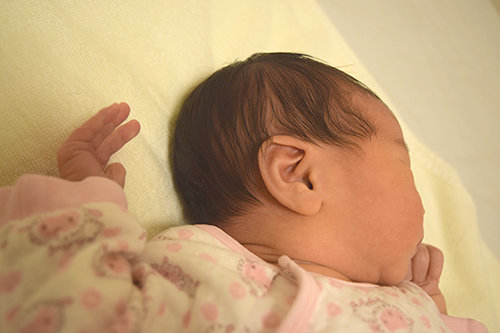
Improving human life through the science of hearing
Laboratory on Sound Information Processing
Research Associate Professor:KIDANI Shunsuke
E-mail:
[Research areas]
Auditory information processing, Psychoacoustics, Speech perception
[Keywords]
Auditory attention, Auditory development, Hidden hearing loss, Sound texture, Speech chains, Lombard effect
Skills and background we are looking for in prospective students
Students are expected to have knowledge of acoustics, psychoacoustics, programming, and statistics. However, it is not necessary to have all of this knowledge at the time of admission. It is most necessary to have the energy to acquire the above knowledge while studying. You also need a certain amount of physical strength to sustain that energy.
What you can expect to learn in this laboratory
Through the study of audiology, you can acquire the ability to solve problems and determine the causes and factors of some phenomena. To solve a problem or determine the cause, it is necessary to formulate a hypothesis, develop a method to test the hypothesis, implement the method, and evaluate the results of the implementation. You can expect to become a person who can carry out these processes on yourself through experience in research. In addition, you can expect to improve your presentation skills by having a conference presentation.
Research outline
Humans hear the sound by capturing air vibrations with their ears. Even though the air vibrations are physically the same, the perception of sound varies among different people. It varies not only among persons but also within-person. For example, some people may like the same music, while others may dislike it. Music that felt good when you were listening to it with your lover may not be good music after a heartbreak. I research the auditory information processing (the mechanism) that humans perceive sound in this way.
Some of my research topics are listed below. ● Study on selective listening
● Study on selective listening
Even in an environment where there are several sounds, humans can listen to a targeted sound. This is called selective listening. By switching attention to a target sound, the auditory system can switch the sounds it listens to. Although many humans are able to do selective listening, the mechanism of selective listening is not well understood. I research to clarify the mechanism of selective listening.
There is also the phenomenon where a person has no problem on a hearing test but cannot hear the other person's voice in a noisy environment. This is called hidden hearing loss and/or auditory processing disorder (APD). If we can understand and clarify the mechanism of selective hearing, we might be able to assist people suffering from hidden hearing loss or APD.
The ability to hear the sounds of infants is at the almost same level as adults. However, selective listening is a growth stage even in elementary school students. It is not clear at what age and to what extent children can do so. The environments in which they spend most of the day are not conducive to the development of selective listening. While investigating the developmental process of selective listening in children, I am also working to improve the sound environment in which children spend their life.
● Study on sound texture
Sound has texture, like various materials. You can probably imagine sound texture when you hear a clear voice or a rough sound. Furthermore, some textured sounds work on emotions. I research what acoustical features of sound induce sound texture and emotion in humans.
Currently, my research focuses on the Noh, a traditional Japanese performing art. The word "YUGEN" is used to describe the quality and elegance of the Noh. My research aims at clarifying the acoustical features of Noh chanting, which is the singing of Noh, and which evokes a sense and a feeling of YUGEN. If we can clarify the acoustical features important for YUGEN, it might be possible to manipulate sound to move people's hearts without being a musician.
Key publications
- S. Kidani, R. Miyauchi, and M. Unoki, “Presentation effect of cue tone on tuning of auditory filter for several frequencies,” Acoustical Science and Technology, 41(1), pp. 378–379, 2020.
- H-I Liao, M. Yoneya, S. Kidani, M. Kashino, and S. Furukawa, “Human pupillary dilation response to deviant auditory stimuli: effects of stimulus properties and voluntary attention,” Frontiers in Neuroscience, DOI: 10.3389/fnins.2016.00043, 2016.
- H-I Liao, S. Kidani, M. Yoneya, M. Kashino, and S. Furukawa, “Correspondences among pupillary dilation response, subjective salience of sounds, and loudness,” Psychonomic Bulletin & Review, 23(2), pp. 412–425, 2016.
Equipment
Soundproof room, simple anechoic room
Equipment for psychophysical experiment
Simple electroencephalograph
Teaching policy
Scientific research requires "accuracy," "rapidity," and "reproducibility. These are necessary not only in scientific research but in all aspects of jobs. I guide you to implement these in their daily discussions and reporting/presenting of results. Good research and study are not possible without mental and physical health. We will support you to make your graduate school life a fulfilling opportunity. Let's make for a better society now by working together with "positively," "upwardly," and "extrovert".